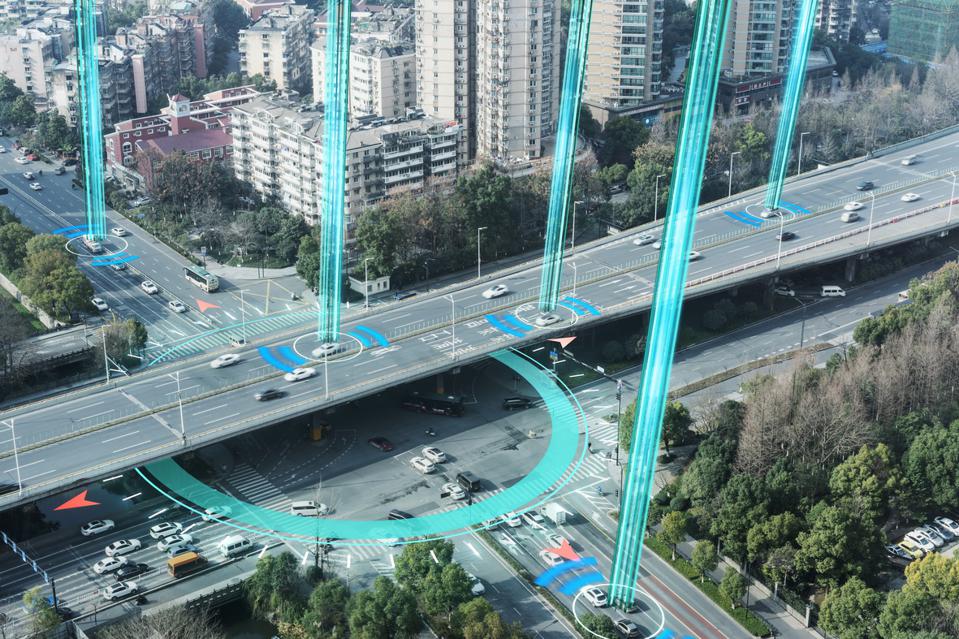
As electric vehicles gain popularity on public roads, our infrastructure is met with new challenges—and not the problems you regularly hear about like creating new charging stations and energy grid enhancements. Rather, the mere weight of these vehicles will lead to rapid degradation of our roads.
Electric cars weigh considerably more than gas-powered cars. For example, the Ford F-150 Lightning weighs 35% more than the gas-powered Ford F-150 truck. This overwhelming amount of added weight on our roads can directly cause more stress and may eventually result in the failure of our paved roads.
While the everyday electric commuter will add additional stress to roads, the problem that really has agencies worried is car haulers. These large trucks are designed to carry around five to nine vehicles at once. The federal government currently has a restriction that limits car haulers to a gross weight of 80,000 pounds, including the truck and trailer that account for half of the vehicle’s weight. Many argue that this restriction is dated and prevents the delivery of these strongly desired vehicles—so much so that some truckers are lobbying for the federal government to increase the weight limits of these trucks so they can meet the demands of society.
Before discussing any sort of solution, it’s important for people to understand the state that our infrastructure is currently in. In 2021, American infrastructure earned a C- on the nation’s Infrastructure Report Card. Importantly, the report highlighted that 43% of our roadways are in poor or mediocre condition. The fact of the matter is that our roads cannot withstand more damage if we want to maintain safety.
Repaving a mile of roadway takes time, money and resources. According to Streetsblog California, repaving one mile of roadway can cost anywhere from $100,000 to $1 million. Aside from this large financial burden, repaving roads has serious environmental implications, from the fuel that equipment requires to the emissions that asphalt releases. While it’s difficult to accept that electric vehicles, with all of their benefits and potential, will also create problems that require resources and tax-paying dollars, we must acknowledge that fact and adapt.
So, how do we adapt?
Electric vehicles aren’t going anywhere and will only gain popularity in the coming years as gas prices rise and making the switch to electric becomes more incentivized. This weight problem will only become a heavier burden on our roads. It’s also important to note that, as we continue to race toward an autonomous-driving future, we can’t afford further damage to the infrastructure that these cars require to drive on.
Preventative maintenance will help pave the way for the future of our infrastructure.
By preventing pavement issues, rather than reacting after it’s too late and having to repave the roads, agencies can save time, money and resources. According to the U.S. Department of Transportation, “Michigan notes that rehabilitation and reconstruction projects cost about 14 times as much as preventive maintenance projects per lane-mile.”
The most crucial aspect of preventative maintenance is real-time insights into the condition of roadways. Currently, pavement assessments rely on manual processes that are subject to biases and delays.
However, there are technologies that can completely automate this process using AI and imagery. When it comes to pavement, photogrammetry can detect anything from minor cracks to large potholes all within 1% accuracy of LiDAR (download required). By avoiding manual assessments, agencies can get their time and money back in order to actually fix issues before repaving is needed.
While allowing AI to detect safety-critical issues seems like a scary idea, this type of technology can deliver faster, more accurate and more objective insights. There are a few keys to success when looking at technologies for pavement assessments.
First, look for solutions that crowdsource imagery in order to ensure equitable and thorough coverage on your roads. Second, make sure that insights can be delivered in near real time, especially if solutions use AI. Finally, make sure that the software and platform are easy to use so your agency can transition smoothly to automated assessments.
While change can be difficult, especially for government agencies, it is oftentimes necessary to adapt to our ever-changing society.
you may also like
California’s new AI initiative opens the door for mass adoption for transportation infrastructure management
California Governor Gavin Newsom’s recent executive order signals California’s bold step towards embracing artificial intelligence as a…
The North Central Texas Council of Governments (NCTCOG) allocated funding to its member agencies
In a promising development for the safety and efficiency of North Central Texas roadways, the North Central…










